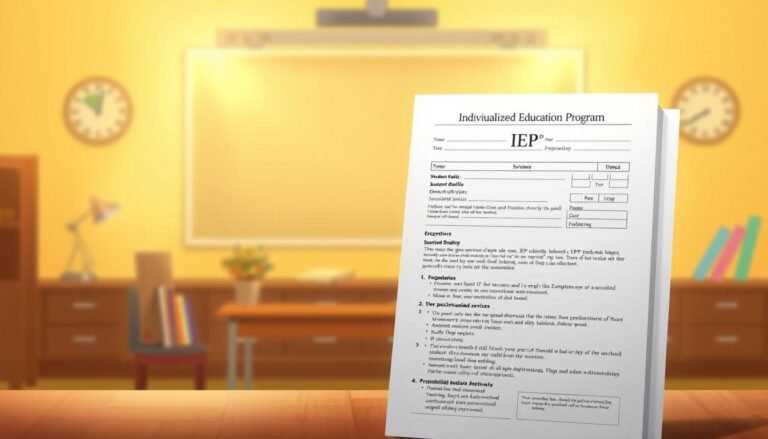
Processing Speed Issues: A Hidden Barrier for Children with Learning Disabilities – Unlocking Potential for Every Child
Introduction
Imagine a bright child bursting with creativity and enthusiasm, yet struggling to keep pace in the classroom. Learning disabilities can manifest in various ways, but one often-overlooked factor can act as a silent barrier: Processing Speed Issues. This hidden challenge affects a significant number of children, hampering their ability to perform academically and siphoning away their confidence. As educators, parents, and advocates, understanding this phenomenon is essential to unlocking the full potential of children with learning disabilities.
In this article, we will delve into the profound impact of Processing Speed Issues: A Hidden Barrier for Children with Learning Disabilities, exploring its causes, effects, and actionable strategies for support. Through real-world case studies and practical advice, we aspire to provide valuable insights that will captivate and empower readers.
Understanding Processing Speed Issues
What is Processing Speed?
Processing speed refers to the rate at which an individual can take in, understand, and respond to information. For children with learning disabilities, Processing Speed Issues can manifest as difficulty following multi-step directions, taking longer to complete assignments, or struggling to express thoughts clearly in writing. These challenges can lead to frustration and a decreased self-esteem, creating a cycle of underachievement.
The Prevalence of Processing Speed Issues
The concept of processing speed has been extensively researched. Studies show that nearly 30% of children with learning disabilities experience significant processing speed deficits. Often underestimated, these issues can profoundly influence educational outcomes, impacting not only academic performance but also social interactions and emotional well-being.
Case Study: Jacob’s Journey
Jacob, a bright 10-year-old with a love of science, struggled in school not for lack of knowledge but due to Processing Speed Issues. Assigned a simple task of writing a report, the pressure to complete it quickly overwhelmed him. While his peers finished within 30 minutes, Jacob took over an hour, leading to frustration and anxiety. This case highlights how Processing Speed Issues: A Hidden Barrier for Children with Learning Disabilities can inhibit a child’s academic experience and confidence.
The Causes of Processing Speed Issues
Neurodevelopmental Factors
Processing speed is intertwined with neurodevelopment. Children with learning disabilities may have structural or functional brain differences that slow down information processing. For instance, alterations in the brain’s frontal lobe, responsible for executive functions and processing speed, can contribute to these challenges.
External Factors
Environmental aspects, such as classroom settings, teaching methods, and family dynamics, can compound the effects of processing speed issues. Children may become overwhelmed in busy classrooms or may not receive the tailored support they need at home.
Interactive Effects of Learning Disabilities
While Processing Speed Issues can exist independently, it frequently co-occurs with other learning difficulties, such as dyslexia or attention deficit hyperactivity disorder (ADHD). The intersection of these conditions can create complex challenges for students.
Recognizing the Signs of Processing Speed Issues
Identifying Processing Speed Issues
Recognizing Processing Speed Issues: A Hidden Barrier for Children with Learning Disabilities often involves careful observation. Signs include:
- Difficulty completing tasks on time
- Trouble following oral instructions
- Involuntary delays in responding during conversations
- Lower performance on timed tests compared to non-timed assessments
Case Study: Mia’s Experience
Mia, an 8-year-old girl diagnosed with attention deficit hyperactivity disorder (ADHD), faced challenges in the classroom. Although she had impressive verbal skills, her teacher noticed that she struggled to finish tasks during class, often appearing lost while trying to follow multiple-step instructions. Assessment revealed significant processing speed deficits, linking her difficulties to both her ADHD and underlying learning disabilities. This case exemplifies the importance of identifying Processing Speed Issues early to provide effective interventions.
Strategies for Supporting Children with Processing Speed Issues
Tailored Instructional Techniques
Educators can implement various strategies to address Processing Speed Issues in the classroom:
Chunking Information: Breaking down tasks into smaller, manageable steps can help facilitate comprehension and execution.
Visual Supports: Utilizing visual aids, like charts and diagrams, can reinforce understanding and retention of information.
- Extended Time on Assignments: Offering additional time for tests and projects allows children to engage without the pressure of time constraints.
Home and Family Support
Parents can play a pivotal role in easing the burden of processing speed challenges:
Creating a Structured Environment: Establishing predictable routines at home can reinforce stability, making it easier for children to follow instructions.
- Encouraging Open Communication: Conversations about learning challenges help normalize the experience, fostering resilience and adaptability.
Assistive Technology
Incorporating technology can make significant differences in learning experiences:
Speech-to-Text Software: This tool allows children to express ideas without the hindrance of slow writing speeds.
- Timers and Reminders: Setting visual or auditory timers can promote time awareness and engagement in tasks.
Case Study: Brian’s Transformation
Brian, a 12-year-old diagnosed with a learning disability and processing speed deficit, experienced significant stress in timed testing environments. By implementing chunking strategies in his study sessions and allowing extra time during tests, his academic performance improved markedly. Over time, Brian’s confidence grew alongside his grades, illustrating the effectiveness of tailored interventions in addressing Processing Speed Issues: A Hidden Barrier for Children with Learning Disabilities.
Collaborative Approaches
Building a Support Network
Collaboration between educators, parents, and mental health professionals can create a multifaceted support system. Regular communication among all parties involved is vital for tracking progress and adapting strategies accordingly.
Utilizing Individualized Education Programs (IEPs)
For children who qualify, developing an IEP can outline specific strategies tailored to the child’s needs. The adjustment of expectations based on processing speed can aid in setting realistic and attainable learning goals.
Case Study: Sarah’s Success Through Collaboration
Sarah, diagnosed with both dyslexia and processing speed issues, benefited greatly from a coordinated team. Her parents, teachers, and a dedicated special education consultant collaborated on effective strategies. The consistent application of visual supports, along with a personalized reading program, led Sarah to surpass her earlier academic hurdles. This collaborative effort showcases the powerful impact of addressing Processing Speed Issues through teamwork.
Conclusion
Understanding Processing Speed Issues: A Hidden Barrier for Children with Learning Disabilities is crucial in nurturing our children’s growth. By recognizing the signs, implementing tailored strategies, and fostering collaborative relationships, we can tear down barriers preventing children from realizing their full potential. Every child deserves the chance to shine, and by advocating for recognition and support of processing speed challenges, we can empower them to unlock a world of opportunities.
FAQs
1. What are processing speed issues?
Processing speed issues refer to challenges in how quickly a child can take in information, understand it, and respond. This may lead to difficulties in completing tasks, following directions, or verbalizing thoughts.
2. How can I tell if my child has processing speed issues?
Signs may include slower completion of tasks compared to peers, difficulty following multi-step instructions, and a noticeable disparity in performance during timed vs. untimed assessments.
3. Are processing speed issues common in children with learning disabilities?
Yes, studies indicate that processing speed issues are prevalent among children with learning disabilities, affecting nearly 30% of this population.
4. What accommodations can help children with processing speed issues?
Accommodations may include breaking tasks into smaller steps, using visual aids, providing extended time for assignments, and utilizing assistive technology.
5. How can I support my child with processing speed issues at home?
Create a structured environment, utilize routines, encourage open communication about their feelings regarding learning, and provide consistent praise to enhance their confidence.
By drawing attention to Processing Speed Issues: A Hidden Barrier for Children with Learning Disabilities, we can collectively work to foster a compassionate and informed approach to education that celebrates each child’s unique abilities. Let’s endeavor to create classrooms and homes that not only recognize these challenges but also cultivate resilience, determination, and growth.
















